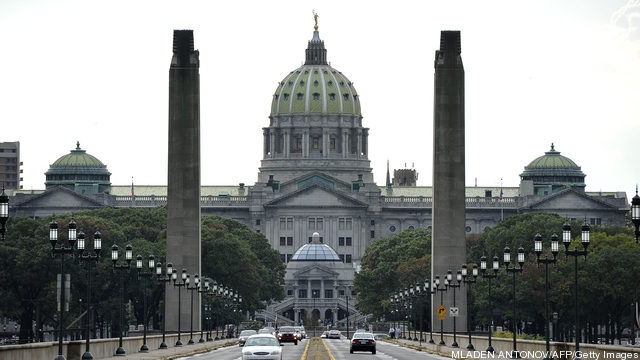Recently, some in the oil and gas industry have expressed questions about an EDF analysis that estimates methane emissions in Pennsylvania to be five times higher than what companies report to the state.
Pennsylvania is the nation’s second largest producer of natural gas. Understanding how much methane and other harmful pollutants may be leaking from the state’s oil and gas infrastructure is critical to protecting our health and our environment.
Here are a few things to know about EDF’s analysis.
Our analysis is one of the few that is specific to the unique landscape in Pennsylvania.
For our review, we relied on peer-reviewed research conducted directly at well sites in Pennsylvania. Some in the oil and gas industry have suggested we should have used a more comprehensive data set to inform our analysis. One recent critique suggested some of the peer-reviewed research EDF has conducted in other parts of the countrycould have been useful in sharpening this analysis.
The issue here is that our goal for this project was to refine the picture of methane emissions in Pennsylvania – not the country as a whole. The volume and characteristics of gas that companies extract in Pennsylvania are different than those of gas found in Texas or elsewhere. We wanted our analysis to draw specifically on measurements collected from well sites in Pennsylvania in order to establish a unique representation of Pennsylvania’s pollution levels.
The peer-reviewed study EDF based its analysis on is one of the only studies to date that specifically measures methane from both conventional and unconventional well sites in Pennsylvania. For this study, the research team measured emissions from well sites over several hour-long periods in order to assess whether methane emissions were episodic or ongoing. Additionally, while companies granted the research team permission to access the sites, they were not permitted to modify their normal operations to alter the methane readings, producing a more accurate view of daily emissions.
Accounting for all sources of oil and gas methane pollution is critical, so that’s what we did.
One reason EDF’s analysis found higher emissions levels is partly due to the fact that the state’s accounting is incomplete. The Pennsylvania Department of Environmental Protection only requires “unconventional” wells to report their pollution, whereas our analysis looked at emissions from all well sites – conventional and unconventional — because all emissions matter.
But even if you don’t include emissions from conventional wells (which are a huge source of the industry’s methane pollution), emissions are still twice as high as what companies report.
EDF’s estimate is conservative – folding in methodologies and findings from other research would have yielded even higher emissions estimates.
The leak rate reported through this analysis is consistent with recent top-down, aircraft-based studies conducted in Northeast Pennsylvania – which is dominated by high producing, unconventional dry gas wells. Those studies estimated methane loss rates between .3 and .36 percent of production– similar to the loss rate reported in our analysis.
If we had used a leak rate consistent with some of the other peer-reviewed research collected in other parts of the country, our analysis would have reported a much higher volume of emissions, not a lower one, as the American Gas Association suggests.
However, looking at leak rates alone – outside of the context of the total volume of region’s methane pollution – can provide a lopsided view of methane emissions. This is why we reported both on leak rate, and the total volume of emissions compared to state estimates, which demonstrates methane is a significant problem in Pennsylvania.
In conclusion…
We agree that better science ultimately increases understanding of methane emissions from natural gas systems and leads to better public policy. That’s precisely what we did with this analysis.
EDF’s analysis is a reflection of the most recent, most comprehensive field measurements conducted in Pennsylvania to date. We’ve made our data and methodologies public, so any one can recreate our findings. We look forward to working with forward-thinking oil and gas companies – as we have in the past – to find effective, affordable ways to solve industry’s methane emissions challenge.
By Mark Omara, Senior Research Analyst, Oil and Gas
Originally Published on May 11, 2018
The Energy Exchange Blog is a forum where EDF‘s energy experts discuss how to accelerate the transition to a clean, low-carbon energy economy. Follow them on Twitter here: @EDFEnergyEX

